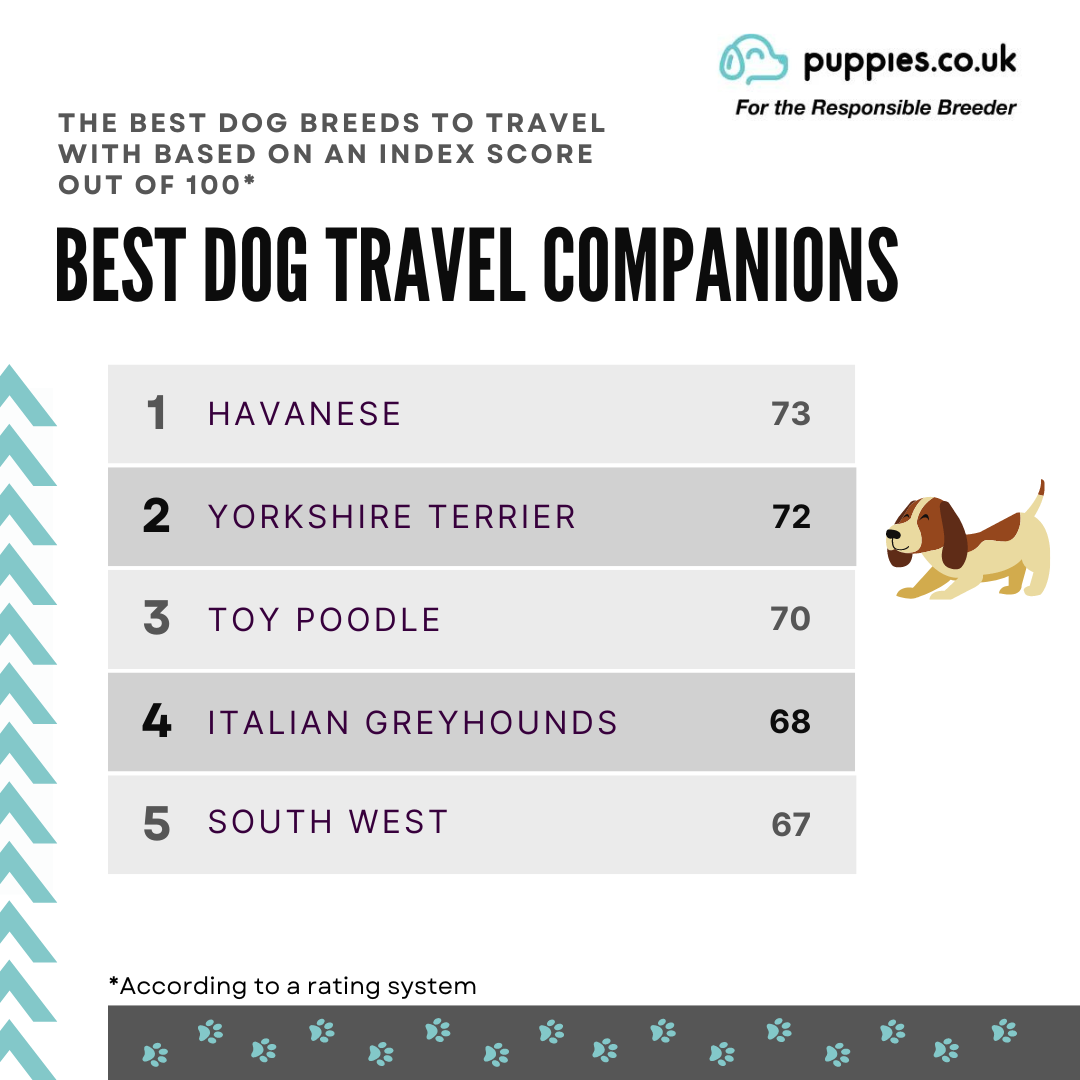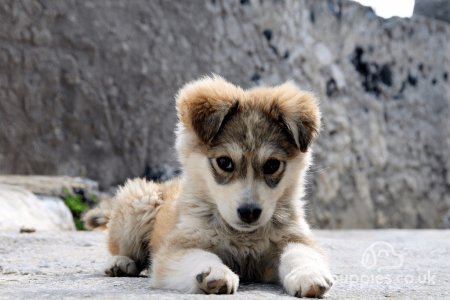5 Best Dog Breeds for Travelling, According to a New Study

5 Best Dog Breeds for Travelling, According to a New Study
Whether you’re jetting off overseas or going on a staycation, a holiday allows you to unwind, bank quality sleep and see new places. However, for many dog lovers, leaving your furry friend behind can make you feel blue. So, it is no surprise that more and more people are thinking about taking their pups along with them.
While having your dog by your side can bring you comfort, dog-friendly travel can be challenging to navigate. Not to mention, some breeds are more adaptable and easygoing than others.
To uncover the ultimate travel companions, we conducted an extensive study evaluating various dog breeds based on seven crucial factors for travel: weight, temperament, socialisation, trainability, energy levels, adaptability, and quietness. Each breed was rated on a scale of 1 to 10 across these categories, and the scores were then normalised to create a comprehensive index out of 100. Read on to find out which dog breeds are well-suited for accompanying you on holiday.

1. Havanese
The Havanese, a pocket-sized breed weighing between 3 to 5 kg, emerged as the most ideal dog breed for travelling, with an index score of 73 out of 100. Known for their affectionate and cheerful nature, the Havanese scored perfect 10s in adaptability, temperament and sociability, and an 8 in trainability. Their compact size and friendly nature make them perfect for journeys of all kinds.

Attribution-ShareAlike 2.0 Generic (CC BY-SA 2.0) - audrey_sel
2. Yorkshire Terrier
Yorkshire Terriers, also known as Yorkies, take the second spot, with a score of 72 out of 100, scoring high marks for adaptability, temperament and sociability. However, this breed ranks low in energy levels (4). Its constant need for high-energy activities and stimulation can make this breed challenging to manage during long trips.

CC0 1.0 Universal (CC0 1.0) Public Domain Dedication - Sciencia58
3. Toy Poodle
Following closely behind are Toy Poodles, with an index score of 70 out of 100. Toy Poodles have grown in popularity in the last few years. Not only are they adorable but they are also very easy to train and eager to please their owners.

Attribution-NoDerivs 2.0 Generic (CC BY-ND 2.0) - duncan blackwood
4. Italian Greyhounds
With an index score of 68, Italian Greyhounds take the fourth spot. Italian Greyhounds feed off human interaction and are generally highly adaptable, meaning they thrive in new environments.

Attribution-ShareAlike 4.0 International (CC BY-SA 4.0) - Kleree
5. Affenpinscher
Rounding off the top 5 are Affenpinschers at 67. Affenpinschers are very intelligent, inquisitive and social pets that adjust well to new environments. However, it is worth noting that they can be stubborn and territorial at times. That is why early socialisation and training are essential to make them comfortable travellers.

Attribution 2.0 Generic (CC BY 2.0) - Dean Jarvey
Tips for Travelling with Your Dog
Of course, travelling with your dog can be pretty exciting. However, it is crucial to prioritise their safety and well-being throughout the journey. Under the Animal Welfare Act 2006, pet owners have a duty of care to ensure their pets' needs are met and to avoid any situations that may cause injury or unnecessary suffering.
If you are travelling by car, you should keep the vehicle well-ventilated and cool. It is a good idea to take your dog on short trips beforehand so they can get used to being on the road.
When it comes to longer journeys, you need to make sure that your pup has been fed at least 2 hours before you set off. On top of this, you need to provide access to water and take regular breaks so they can get some exercise and use the bathroom.
If you're taking the train, it makes sense to get your pet familiar with the environment by taking short local trips. Check the train company's pet policy in advance and choose less busy times to avoid overwhelming your beloved pet.
For ferry travel, it is wise to contact the ferry company for their pet travel policies, as pets are usually confined to vehicles or specific areas. It is best to avoid travelling on hot days and ensure your pet has adequate ventilation and water.
Similarly, air travel can be particularly stressful for pets as they are usually transported in the hold. Generally, it is best to avoid flying with your dog, unless you have a really good reason for bringing them with you.
If you plan to fly with your dog, it is advisable to book direct flights, travel when it's cooler, and make sure your dog has water in a non-spill container.
By taking these steps, you can ensure that travelling with your dog is a safe and enjoyable experience for both of you.
Do I Need Pet Travel Insurance?
When taking your dog abroad, you will likely run into new risks that you have never dealt with before, such as encounters with stray populations, extreme weather and even unpredictable traffic. If something goes wrong and your beloved companion gets ill or is injured, having a pet insurance policy that includes overseas cover can make things easier and save you money.
Data from Agria Pet Insurance shows that since 2023, 10,587 policyholders have added overseas cover to their policies, highlighting that this is an extra worth adding on. In fact, 361 claims have been made against this benefit so far.
Agria were named Which?’s Best Buy 2024 Pet Insurance provider. Their overseas travel cover includes:
Emergency expenses - Up to £500
Money towards a replacement pet passport - Up to £250
Quarantine kennel costs - Up to £2,000
Third-party cover
Getting a Puppy
If you are thinking about getting a new puppy, it is essential to find the right match for your lifestyle and travel schedule. Once you settle on the ideal breed, use Puppies to find a reputable breeder for your new furry companion.
Before bringing your puppy home, it’s wise to read our puppy health guide. If you have concerns about the costs of caring for your dog, check out our report for practical tips on finding support and reducing your monthly expenses.












